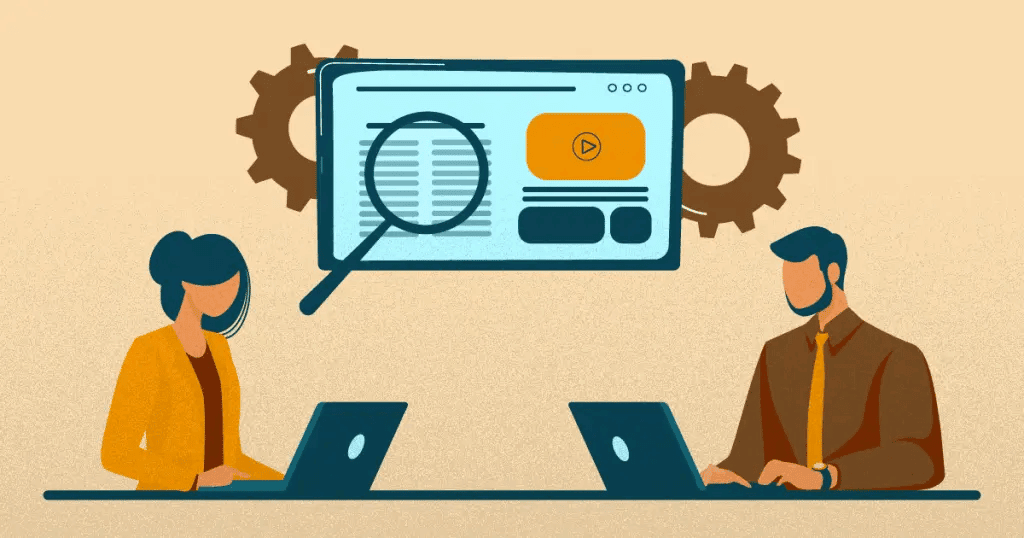It’s safe to say that search engines, like Google, control much of what we see online.
Search engine optimization (SEO) is a fundamental part of digital marketing, and Google itself serves hundreds of millions of queries every day.
One exciting aspect of these search engines is that they can influence everything we see, not just search results. Programs like Google AdSense can populate ads on other site pages.
Both marketers and consumers should understand how AdSense works and how it affects what they see online.
This article will dive into the various aspects of Google AdSense. Here’s everything you need to know about Google Adsense.
- A Brief Introduction to Google AdSense
- How Do I Set Up Google AdSense?
- Where Do I Find Ad Settings?
- How Do I Change My AdSense Ad Settings?
- Should I Turn On Personalized Ads?
- What Happens if I Turn Off Google Ad Personalization?
- Learn More About Digital Marketing With RockContent!
A Brief Introduction to Google AdSense
If you’re unfamiliar with Google AdSense, you need to understand that it works in a three-step process.
Technically, there is the initial step of building a strong enough audience to have advertisers compete for space, but that’s a topic for another day.
Google AdSense works like this:
- First, you create ad space on your website by embedding code and choosing where you want ads to appear. For best viewing, you’ll need to adhere to standard ad dimensions. Making it easier for brands to promote on your site can help to create a more competitive environment on your blog.
- Next, AdSense will host a live auction between advertisers. The highest bidder gets control over your ad space. If you have multiple pages with different codes, you could have different ads on each page. This tactic can help improve your revenue stream, but it may also be unappealing to potential visitors.
- Finally, Google handles the bids and transactions on your behalf. As long as you can maintain premium site traffic, you can likely earn a pretty good income with this system.
How Do I Set Up Google AdSense?
Fortunately, as with everything else related to your Google account, it’s easy to get started with AdSense.
Simply follow these steps to set up your profile:
- First, go to the AdSense page and click “Get Started.”
- After signing into your regular Google account, enter the URL for the website on which you want to run ads. You will be able to publish something once Google has had a chance to review the URL. You can also leave this spot blank and fill it in later, if necessary.
- A checkbox could pop up asking if you want help and support when running your AdSense account. Checking this box allows Google to send tips and tricks for getting the most out of your account.
- Next, choose your payment country, so Google knows which currency to use.
- Finally, read through and accept the AdSense user agreement. Once that’s finished, click the “Use AdSense” button, and you’re ready to go!
Where Do I Find Ad Settings?
First, you will go to your Google account and find the section labeled Data & Privacy.
In this section, look for the words “things you’ve done and places you’ve been.”
There, you’ll find your ad settings, and you can turn off personalization so Google won’t scrub your online activity and reduce you to a few targeted advertisements.
As a marketer, you don’t have much control over the ads displayed on your site. Instead, Google curates these ads based on user information and search history.
That said, there’s growing pushback among consumers to limit or eliminate targeted ads altogether. While the practice can deliver high-value content to individuals, the program can sometimes be downright creepy.
Fortunately, ad settings allow users to take back control over what they see and where.
For example, talking or discussing a brand with someone via Google means seeing ads for that brand later on different sites.
Because Google is constantly mining information, it knows what you’ve been looking at and will fit an advertisement for a related product wherever it fits.
How Do I Add Settings?
Go to your Google account and find “my apps”, scroll down to my ad centre the section labeled Data & Privacy. Find “things you’ve done and places you’ve been.” and then navigate to “how your ads are personalized.”
Here is where you’ll see your interests, and you can update or add settings to make the ads you see even more targeted and personalized.
All you have to do is turn your interests off or on, depending on what you see.
How Do I Change My AdSense Ad Settings?
The Ad Settings section has turned into My Ad Center.
You can find it by going to myadcenter. Here, you can customize your ad settings so AdSense can tailor the ads you see based on your specific interests.
My Ad Center is divided into a few different sections – ad topics, brands, and sensitive settings.
Here’s an overview of each section and how you can adjust your ad settings accordingly.
Topics Settings
You should already see some topics populated, and these are based on data from your search history, YouTube profile, and more.
You can also customize where Google gets your data from, if you’re worried about the algorithm getting to know you too well.
In this section, you can tell Google which topics you’re interested in the most, such as:
- Games
- Air Travel
- Real Estate
- Banking and Finance
- Biotech and Pharmaceutical
- Fast Food and Restaurants
- Investing
- Pest Control
- Photo Software
- And so many more.
Simply press the plus or minus key to add or subtract topics from your ad settings. You can also change your preferences whenever you like.
For example, if you select a topic and decide you don’t like seeing ads from those companies, you can just turn it off later.
Brands Settings
Again, Google extracts data based on your search history, including what you’re looking at on social media.
Your list should be populated with brands you’ve seen ads for recently, so they’ll vary from person to person.
Brands can be from all kinds of industries, including:
- Car Rental Services
- Gas Stations
- Retailers
- Restaurants and Foodservice
- Google Products
- Financial Services
- Banking
- Real Estate
You may notice brands you’ve searched for directly, or you might see companies you’ve never heard of before.
While it’s unclear how Google determines which branded ads you’ll see, the algorithm bases those decisions on your internet activity more than anything else.
Sensitive Settings
Some topics are sensitive to individuals and could trigger adverse behavior or emotions.
All these sensitive sections are turned on by default, but you can turn them off easily.
Here’s a rundown of what Google considers “sensitive” ads:
- Alcohol – These may be sensitive to those with alcohol-related issues.
- Dating – Individuals in relationships may want to avoid risking their partner seeing ads for dating sites.
- Gambling – As with alcohol, gambling can lead to addictive behaviors, making these ads problematic for some people.
- Pregnancy and Parenting – Those who may struggle to get pregnant or have no interest in having kids might want to limit these ads.
- Weight Loss – These ads can be seen as fat shaming.
Currently, there are no other sensitive topics, although Google says it offers these options based on loads of user research.
Also, while you can limit ads for these topics, you may not remove them entirely.
For example, you may see a travel ad that shows kids or alcohol. So, even though those are “prohibited” topics, they can still show up because the ad isn’t related to those elements directly.
It’s also possible that Google will add more sensitive subjects in the future. But, for now, if there are topics you want to be off-limits, you have to get a bit creative about what you block.
Should I Turn On Personalized Ads?
Personalized ads work by collecting data about your online habits and search history. Basically, whenever you look up information on Google (or a Google-owned product like YouTube), the site logs that data for personalized ads.
For example, if you’re planning a trip to Orlando this summer, you might see travel ads for cheap flights, hotels, and rental cars. Similarly, you may see ads for alcohol, party supplies, and more if you’re planning a party.
The primary benefit of personalized ads is that you’re sure to see promotions for things about which you’re interested.
Also, if you’re trying to find the best deals, you may get access to ads with discounts or benefits you would otherwise miss.
However, the downside of this setting is that it’s based on your search history. So, if you’re using Google for other non-personal work, you may also see ads for that content.
Since this setting changes constantly, you might see ads for products you’ll never use.
What Happens if I Turn Off Google Ad Personalization?
In this case, Google won’t collect data from your search history and not be able to use it to sell AdSense to specific advertisers.
However, the program will still customize ads based on generic information like the type of site you’re visiting and your computer’s physical location.
For example, let’s say you’re purchasing deodorant online from a beauty supply store in LA. Google may then send you ads based on keywords like LA and beauty supply, but not ads for specific products or demographics.
Overall, you’ll still get semi-customized ads, but you can rest easy knowing that Google isn’t collecting that information.
Learn More About Digital Marketing With RockContent!
Knowing more about Adsense makes it easier for you to customize your Google experience.
If you’re a digital marketer, you can also use this information to ensure you’re creating targeted ads that add value to your customers’ lives. Otherwise, it’s easy to block ads from your business or industry.
If you want to learn more about digital marketing and want access to 3 clusters of marketing and sales resources, check out our Marketing Planning Bundle for 2023.








